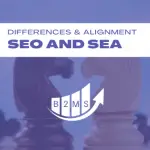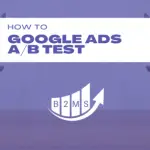How many ads should be implemented per ad group?
This question is so important that Google tests this knowledge in its Search Certification Exam. Let’s see if you’d get it right?
- Only one
- One or two
- Two to three
- Three to five
The correct answer is three to five ads should be implemented per ad group in Google Ads.
But let’s dive deeper into why this is the case.

Complete Google Ads Ad Group Guide
What are Google Ads ad groups?
Ad groups are as the name indicates groups of ads with a shared goal or setup. One ad group can have multiple ads and keywords.
The difference between a campaign and ad groups is that ad groups are organized under a campaign.
For example, campaign A has three ad groups, and campaign B has two ad groups. Each of the ad groups should have three to five ads associated with it.
There’s no defined number of keywords a search ads group should have. It’s becoming a trend to have single keyword ad groups. This makes it possible to optimize the ad copy and deliver the right message with text ads.
Campaigns don’t have to have multiple groups – they can also have a single ad group. There’s also no minimum required how many ads per ad group you have to have, but rather a recommendation for the best possible performance of the ads.
When should I create a new ad group instead of a new campaign?
If the ad group shares the common goal and campaign type as well as setup you should create a new ad group. If your objective is different, it’s best to create a new campaign.
Campaign objectives are:
- Sales
- Leads
- Website traffic
- Product and brand consideration
- Brand awareness and reach
- App promotion
- Local store visits and promotion
You can also create a Google Ads campaign without any goal guidance.
Different campaign goals have unique campaign types. For example, website traffic campaigns can have search, display, video, shopping, discovery formats. Whereas lead gen objectives have additionally smart campaign formats available.
The campaign settings are applied to ad groups and therefore require a new campaign if you want to apply other settings:
- Budget
- Bidding
- Ad rotation
- Network (e.g. search vs display network)
- Location
- Language
- Audience
A common use case for having multiple campaigns with the same settings is the budgets. Budgets need to be set at the campaign level and don’t fall under ad groups. If you want to manage budgets for each ad group you need to create specific campaigns for each ad group (1-to-1 relationship).
Whats is the best way to create ad groups?
Ad groups should have the same objective as the entire campaign. They should follow a logical structure of keyword groups and ad copy for search campaigns. For example, search queries related to a specific solution should be in the same ad group, whereas another solution might be a new campaign or ad group. You can also match different search intents to ad groups or campaigns if you want to control the ad budget.
Here’s a basic framework with an example of a marketing agency – let’s call it B2MS.
Campaign A: Branded terms
Ad Group A1: Brand -> exact matches of B2MS
AdGroup A2: Brand + Solution 1 -> B2MS + SEO terms
Ad Group A3: Brand + Solution 2 -> B2MS + Performance marketing terms
Ad Group A4: Career and culture -> B2MS + jobs
Campaign B: Solution 1
Ad Group B1: Solution 1 general phrases -> keyword research, spy on competitor keywords, etc.
Ad Group B2: Solution 1 high purchase intent -> hire SEO agency, SEO agency near me
(the same goes for other solutions)
Campaign C: Competitor
Ad Group C1: Competitor names
It’s also possible to run Google Ads experiments to A/B different ad group strategies.

Sascha is a Lifecycle Marketing Consultant with over 8 years of digital marketing experiences in Silicon Valley, the UK, and Germany.
After leading the demand generation for a 100+ million company, he decided to venture out on himself. He’s now helping clients to attract and convert more leads and customers.
His main focus are SEO, paid media & marketing automation – all with the focus to tie marketing campaigns to revenue.
Sascha has been featured in industry publications.



